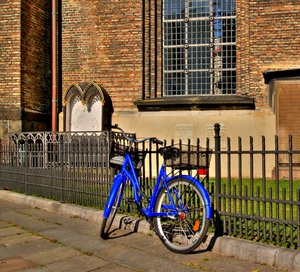A local man was recently killed in a pedestrian accident while merely finishing up some household chores. The man was killed in Framingham pedestrian accident just a few steps from home. The 61-year-old man was taking out the garbage when he was hit by a passing vehicle. According to the Boston Herald, the man was walking down his sloping driveway located on Edmands Road. That roadway is a two-lane, shoulderless road where many locals complain about speedy traffic.

The man’s wife was home with their young son when a stranger knocked on the door with the news of the accident. It happened around 4:00 p.m. Officers have not released the name of the driver, but do say that he remained at the scene of the accident and an investigation is pending. A neighbor of the victim says that it was just a matter of time before an accident like this happened. She says their roadway is a very scary place for pedestrians. She says that she and her neighbors would love to see some speed bumps installed in the area to help to slow down traffic.
Our Framingham pedestrian accident lawyers understand that on-foot traffic faces some serious risks near motor vehicles. It’s critical for drivers to be cautious and alert when driving through residential neighborhoods. It’s in these areas where children and families enjoy the outdoors near the comfort of their own home. An alarming number of pedestrian accidents happen in residential driveways. It’s a team effort and both walkers and drivers need to work together to help make our roadways safer for everyone.
Experts report that about 40 percent of pedestrian accidents occur in residential neighborhoods while only about 35 percent happen in business areas. More than 40 percent of accidents happen at non-intersection areas, including parking lots, driveways, mid-block locations and off roadway locations. Roughly 38 percent of accidents happen at crosswalks and the other 62 percent happen at non-crosswalk location.
According to the National Safety Council (NSC), there are nearly 6,000 pedestrians killed every year. Another 90,000 are injured annually. Police throughout the state are urging pedestrians to be cautions when walking along our streets, even in the comfort of their own neighborhoods.
Tips for Pedestrians:
-Always use sidewalks when they’re available.
-Use crosswalks when you can.
-Dress in bright or light-colored clothing to help motorists to see you.
-Consider wearing reflective materials if walking during evening or early morning hours.
-Walk facing oncoming traffic if you have to walk along a roadway.
-Carry a flashlight if you have to walk during the evening.
-Don’t drink and walk. Just as alcohol hinders your ability to drive, it also hinders your ability to walk safely.
-Teach children to look left, right and left again before crossing the road.
-Make eye contact with drivers before attempting to cross.
-Curb distractions. Keep your eyes off your phone while walking along roadways.
Continue reading
 Boston Personal Injury Attorney Blog
Boston Personal Injury Attorney Blog












